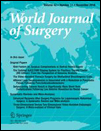Microeconomic Benefit of Corneal Transplantation in a Developing Country via Public–Private Partnership Model
Disclaimer The opinions or assertions contained herein are the private ones of the author and are not to be construed as official or reflecting the views of the Department of Defense, the Uniformed Services University of the Health Sciences or any other agency of the US Government.
Abstract
Background
We measured the microeconomic benefit, QOL, DALYs averted and clinical outcomes of corneal transplant surgery via a public–private partnership in Guyana. Corneas were obtained, ex gratia, from US eye banks, and the work was done at no cost to the patient or the Governments of USA or Guyana.
Methods
We obtained qualitative data using a “semi-structured interview technique” to question 60 recent recipients of corneal transplants in Guyana. Our questions covered schooling in children, training for job, and type and income of job, both before and after surgery. We also discussed improvement in family income and quality of life (QOL) using a Likert scale of 1 lowest to 5 highest.
Results
Our data came from five humanitarian missions from July 2014 to July 2017. All school-going children (n = 6) were able to return to school and participate in educational activities. Young adults (n = 13), were able to acquire new jobs (50%) or training positions (50%) with higher income. Patients in the middle-age adult group (n = 20) re-acquired their employment positions (25%) or found new work (75%). Elderly patients (n = 21) after transplant were able to perform odd jobs to increase the family income. A consistent theme across all age groups was a dramatic improvement in the QOL. Two hundred and sixty DALYs (4.3 per patient) were averted. In this cohort of 62 surgery cases, mean preoperative visual acuity was 0.03 and postoperative mean visual acuity was 0.20.
Conclusions
We have shown microeconomic benefits and improved QOL of corneal transplantation in a low-income country.




